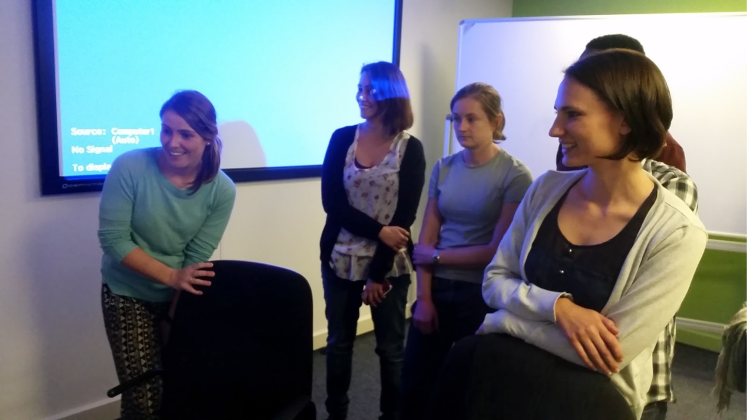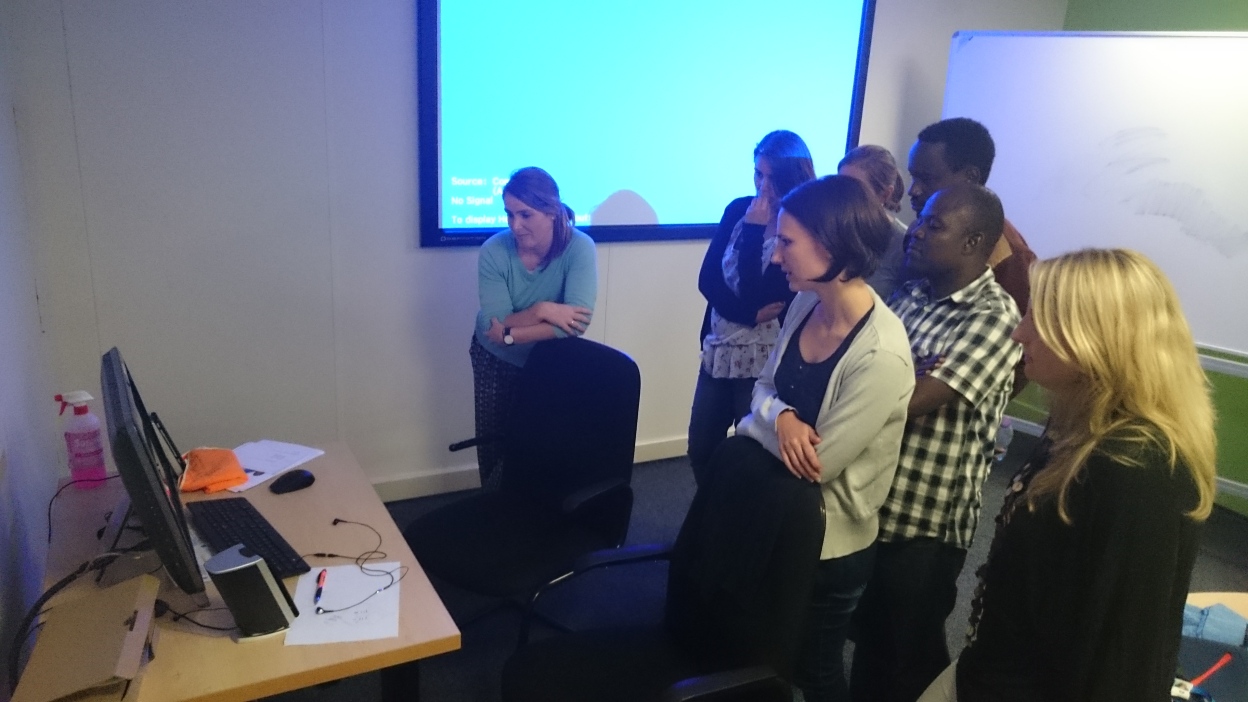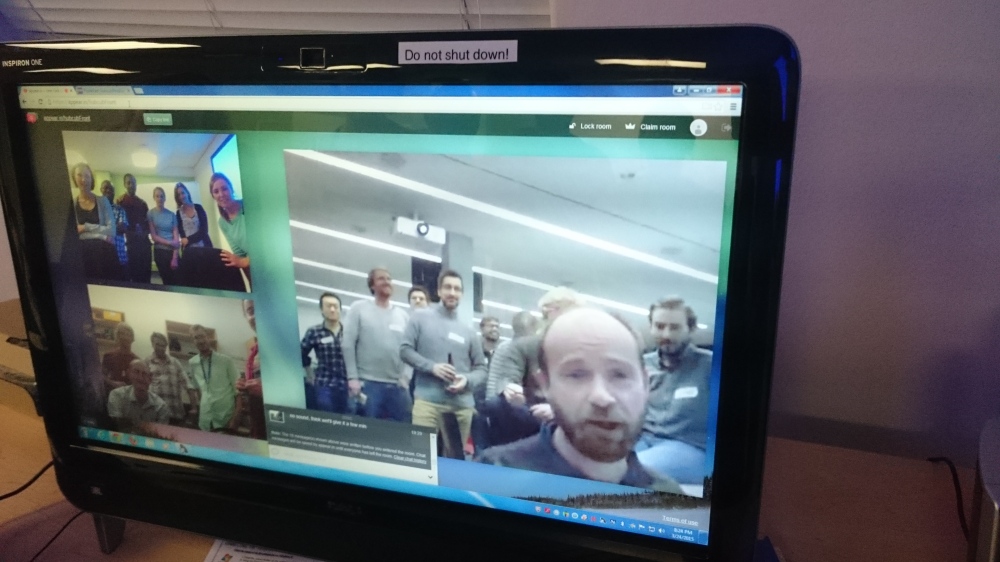[Co-authored by Natasha Wood, Marike Visser, Anelda van der Walt, Gustavo Salazar. Photos by David Matten and Anelda van der Walt.]
Networking can be tough, but it can also be surprisingly easy!
What do you get if you use technology to introduce different groups of people from three geographically remote locations for an unseminar in Bioinformatics? Three rooms filled with computers and strangers and very little choice on whom to approach and what to say as you introduce yourself…
The instruction from the organiser: “Talk to the person standing in front of you – you have 90 seconds. Go!”
Within this scenario, awkwardness is allowed and often expected but disappears as the clock starts ticking because you soon realise that everyone else is faced with the same predicament. The fleeting encounter is over before you can think of what you should have said instead, and you leave contented having met a new peer.
This was exactly our experience at CUB#6.
After a quick meet-and-greet, between CUBers in Cape Town and GrUBers in Grahamstown, we were ready to mingle with the HUBers in Heidelberg, Germany. The initial social conversation evolved into enthusiastic planning around a collaborative project. And, almost like an exciting children’s party, ended too early as ideas were still being bounced around when goodbyes had to be said.
During this week’s session we were once again introduced to several great tools for inter-institutional, or rather, intercontinental, collaboration. We started the meet-and-greet using appear.in, a video chat room tool that allows up to 8 people joining for free. It’s as simple as
- Navigate to the website https://appear.in/
- Create a room by entering a room name
- Share the link with your colleagues and start chatting
We also used PiratePad (an implementation of Etherpad) a collaborative, real time editor, which allowed us to take notes of discussions and ideas as they were happening. The end result was that everyone had access to the notes in real time and everyone could contribute to the note taking. No longer does a single person have to be nominated for taking minutes, and no longer do we have to wait for days or weeks before minutes are circulated after laboriously re-typing handwritten notes in a word processor. And one of the greatest benefits of using this web-based editor? Every person, even the one who never gets a chance to talk, can contribute by adding their thoughts to the PiratePad.
We decided to work on a common software project where any member can contribute according to their preferences and skills. The project is to create a user friendly version of a program that divides a group into pairs, prioritising the preferences of each person wanting to talk to someone in particular. The algorithm was presented in a paper in 1985 by Irving and we will use an existing implementation in Perl as our reference. The final notes of the event organised by each of the focus groups are available in the links below:
- user experience: http://piratepad.net/hubcubUX
- name the product: http://piratepad.net/hubcubProductName
- code: http://piratepad.net/hubcubCode
- designing a logo/icon: http://piratepad.net/hubcubLogo
- interface: http://piratepad.net/hubcubInterface
Of course these tech-type link-ups don’t always run smoothly right from the start, but after the initial disarray we managed to achieve our overall goals for the evening. And with each event there is progress towards that sense of community where a group of scientists with a keen interest in bioinformatics can meet and discuss topics and philosophies related to their field.
We’re looking forward to our next CUB-HUB-GrUB meetup! *
We are extremely grateful to UCT ICTS for the use of their facilities. 

